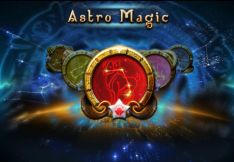Punto Banco Online Game
Punto Banco is an interesting card game that is related, but also a little bit different, to Baccarat. If you’ve never played either game, before you will need to be aware of the basic rules so you can understand what is going on. Apart from laying a bet there is no interactivity and the hands are over fairly quickly so all the more reason to find out what’s happening.
Players also liked




PUNTO BANCO ONLINE GAME REVIEW
Progressive Jackpot: No
Software: iSoftBet
Paylines: N/A
Reels: N/A
RTP: 98.92%
Truth be told, Baccarat is one of the easiest games to play in the casino, and given the fact that it also offers players with some pretty great odds, it really should be one of the most popular gambling games in the world. But while high rollers are very fond of this game, a lot of casual players try to steer clear of it, thanks to a reputation for being an intricate, exotic game that few understand.
That issue can become compounded when baccarat goes under one of its more traditional names. Such is the case with Punto Banco, a name that sounds intimidating, despite the fact that it is just the proper name for the variant of the game that is played at casinos all over the world. You don’t need to know any unusual rules or terminology to play this classic. If you have ever played baccarat before, you’re already prepared to jump right in and place your bets.
Punto Banco is played from a shoe that contains different standard decks of playing cards, the same ones you would use in blackjack or poker. The goal of the game is to forecast which of two hands will win on each round: the player (or punto), or the banker (banco). Betting on either hand is perfectly okay. Despite the names, there is no particular stigma that comes with betting on either side on any given round.
After you’ve made your bets, the dealer will hand two cards each to the player and banker's hands. Each card adds a particular number of points to a hand. An ace is worth one, numbered cards are worth their number, and all tens and face cards are worth zero. The total score for a hand is equal to the final digit of the total value of the cards. For example, a hand of 5, 15, or 25 are all scored as being worth five points. Nine is the best possible score, while a zero is the worst.
How the round plays out differs depending on the status of the two hands. Should either the player or the banker end up making an eight or nine after their first two cards, then the hand immediately ends, with no further cards being drawn. If that is not the case, then a set of rules – known as the tableau – is followed to play out the remainder of the round and find out who the winner is.
First, the player makes a very simple decision. If they have a score of five or lower, the dealer gives them one more card. But if the player total is instead six or higher, they will stand.
The banker is next. If the player stands, then the banker follows the same rule: they stand on a six or more, and draw on a five or less. If the player instead took a third card, then the banker follows a set of rules based on the banker's hand and the value of the third card drawn for the player hand.
Those rules look as follows:
- Player Draws a 2 or 3: Banker draws with 4 or less.
- Player Draws a 4 or 5: Banker draws with 5 of less.
- Players Draws a 6 or 7: Banker draws with 6 or less.
- Player Draws an 8: Banker draws with 2 or less.
- Player Draws a 0, 1, or 9: Banker draws with 3 or less.
The odd rules for the banker here are drawn from an older version of baccarat, known as chemin de fer. In that version, a banker did play against a player (or group of players), with both sides keeping their initial two cards face down. If the players elect to draw, then that final card was dealt face up, giving the banker some information about whether or not they too should draw to try and improve their hand. In no case does either side ever receive more than three cards in total.
Once all the drawing rules have been followed, the final scores of the two hands are compared, with the higher score winning. Bets on the winning hand are paid out, while bets on the loser are lost entirely. All wins on the punto hand are paid out at even money; however, all banco bets return even money minus a 5% commission.
This version of Punto Banco is a fairly easy way to approach this game. The running total of the hands is noted next to the cards so you can keep a track of what’s going on. The RTP of this game is a robust 98.92%